You may wonder how photographer Jeremy Koreski can get inside waves, surround himself with dolphins, and shoot treetops from high above.
Sometimes it means tumbling around in the water. Sometimes it means blowing bubbles (we'll explain later). Sometimes it means leaning out of a rolling helicopter.
Koreski grew up in Tofino, British Columbia but believes there are always new adventures waiting ''around the next corner.'' Capturing this province on film is his day job -- and he feels lucky for it.
The thrill of the outdoors is evident in his work, and his many clients include Patagonia, Hurley, Stussy, Rip Curl, Adidas and various international editorial publications.
Koreski shared with The Tyee how his childhood in Tofino shaped his work, how he's able to capture his stunning shots, and, after seeing the world, why there really is no place like home.
Tyee: What was it like growing up outdoors in Tofino? Did your childhood inspire you to work here?
Jeremy Koreski: ''The environment and nature were a huge part of growing up. I have lots of memories of Tofino before it became the tourist destination it is now -- memories of camping on a beach on Bargus Island and not seeing one boat pass by in a week, being able to experience Clayoquot Sound before it got popular, my family taking me out for hikes. It's shaped my work and it's shaped a lot of the things I feel are important, so now I base myself between Tofino and the Cowichan Valley.''
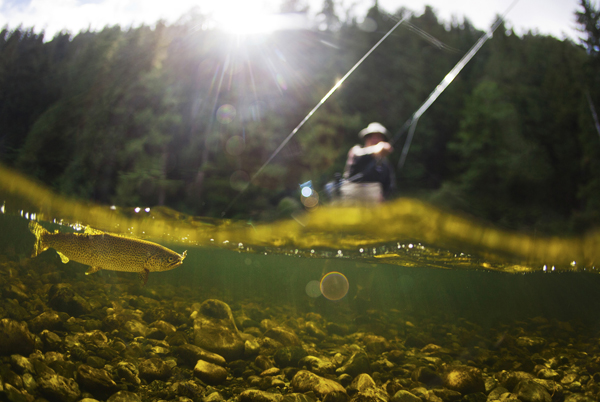
Was capturing your home always something you wanted to do?
''There was a family joke that I would never want to come back to Tofino, and I'm really eating my words now. That was the teenage years. After travelling and seeing what the rest of the world was like, I felt a deeper appreciation for where I grew up, and over time I realized Tofino's pretty darn special.”
I heard your father gave you a Canon AE1 when you were 12. What was it like taking it around when you first started?
''I was kind of a skateboard rat. I shot a lot of skateboarding, snowboard trips, surf trips. When I picked up the camera, I stopped doing activities or the sport less and less, and spent more and more time with a camera. My friends loved it, especially during the surfing trips and the adventures. All the surfers wanted their photo taken.''
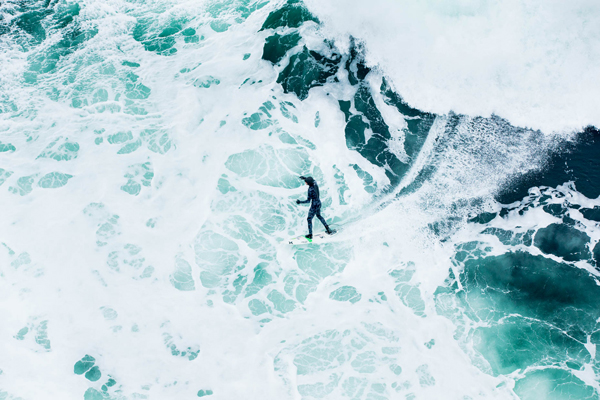
A lot of your work captures adventure. Can you tell me about that, and why you love it?
''It's just something inside me. I want to see around the next corner, or fish that next run, or whatever it is. It's definitely a driving force, but I can't really put it into words. It's something I enjoy doing, seeing places and going to new places.''
Of course, outdoor adventure photography comes with physical challenges and that's visible in your work. What are some tough conditions you've had to battle?
''The cold. It's hard to put into words even when I show photos to people, whether the water is 10 degrees Celsius or zero. There's not a lot of difference in the look of the image. The coldest I've ever been in was in Nova Scotia, and I think the water was 32.4 Fahrenheit, so just hovering about freezing. The air temperature was minus-20 Celsius. That was challenging, just from your body shutting down in that cold.
''The way that lifestyle photography and outdoor adventure photography has gone is that you deal with the elements as they hit you, whether it's pouring rain or cold. You just gotta capture what you can capture.''
Is it hard actually being in the water yourself?
''One of the challenging things is swimming around with a camera and the spots you put yourself to get the surfing images, but I grew up in the waves. I got battered around a lot as a kid.
''This is a childhood story… There was a place called Frank Island, actually on Chesterman [Beach] that we used to call the Trench. The Trench was essentially a surge channel, and we'd go there on really stormy days and put on a lot of hockey pads and when the waves would come, we'd jump in and get smashed around.
''When I'm out there [shooting], I'm not really thinking about that. I'm aware of where I shouldn't be, so I don't get hurt. Mostly I just focus on taking the photos.
''A lot of people don't realize I'm in the water quite often with a wide angle getting waves crashed down on my head. When a wave goes over my head, I just wrap my arms around my camera and basically get bounced around on the rock bottom. But it's a lot of fun.
''A documentary done a few years ago that really encompasses what I do is called the Dark Side of the Lens, by a photographer out of Scotland called Mickey Smith. It's in his words but it shows what I think of when I'm shooting and some of the reasons I shoot as well.''
You have shots taken from inside waves and in freezing water, but you also have a lot of aerial shots.
''Those were all from a helicopter. Generally, we take the doors off. I have a client that uses helicopters quite a bit, and they've allowed me the opportunity to photograph from that perspective a lot. When I'm on jobs for them, I ask the pilot to do what's called 'rolling over' so I get that straight down perspective. I've been finding it interesting. I haven't seen that done a lot, aside from drones.''
You have a lot of intimate shots of wildlife. Can you walk me through how you photograph animals?
''Most of the time it's tremendously fun. One of the most memorable was shooting between two and three white-sided dolphins in what we call Blue Water, 50 kilometres off of Tofino. The more fun we were having making bubbles, the more interested and fun they were having. It was really interactive.
''More recently, I've jumped in with Steller sea lions. You have to watch the animals' behaviour in the water and there's a lot going on. It's the most fun when you're interacting with the animal directly. The animals seem to be more interested or curious than when you're on land.
''For the bear picture, that just happened. We were actually photographing a different bear, and that bear just came and sat there, basically posed. It's really cool when those moments happen.''
Your style is very evident in your client work. What's the behind-the-scenes process like?
''Quite often the work I do for clients, they just say, do your thing. We like your style. We like what you shoot. I'm really lucky in that respect, that I can shoot what I want. The art I take on for clients is personal work. I don't feel the urge to shoot more than I usually do because when I'm on a job, I'm shooting personal work.
''This week I'm going to a couple of river systems in northern B.C. and I'm quite excited to get to explore and take photos. That's what I get paid to do. I'm extremely lucky.''
What are your favourite shots?
''The shots that I love the most are the ones that people don't necessarily believe are true images. My favourite images are the ones that make people think and question, 'Is that actually a real photo or an un-manipulated photo?' But it definitely bums me out when they believe it's been manipulated, the surfing ones in the water for sure.''
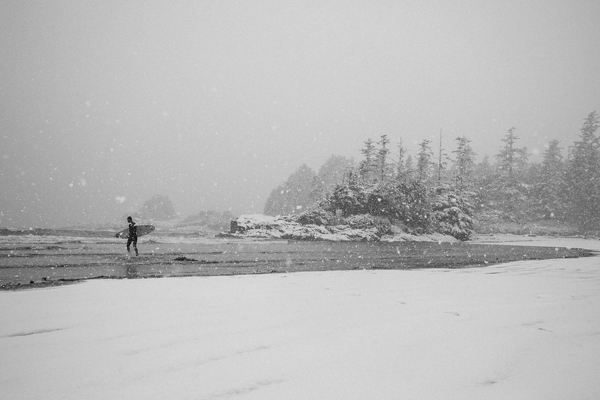
What's the international response been like? Are people surprised by what we have here in B.C.?
''It's been really good. Most of it is seen through international editorial publications. I did a shot for Cereal [magazine] on a feature about trees. I also do a lot for surfing mags in Australia, Europe, and America. People like the work and the geography and the way the area is, the wildlife, all of it.
''I think there's a lot more to B.C. than people realize. I mean, from a geographical point of view, we have deserts, we have temperate rainforest, we have lots of regions. The other day I was flying through the Fraser Canyon and it was 38 degrees Celsius, and it was quite different from what I'm used to on the island.''
What do you hope your photos will share with people?
''I hope what I'm photographing, and the way I'm photographing it, helps people find that appreciation that took me going away to find -- the appreciation of what we have here, one of the last areas with intact pristine forest or ecosystems. A lot of places around the world are losing them a lot faster than we are.
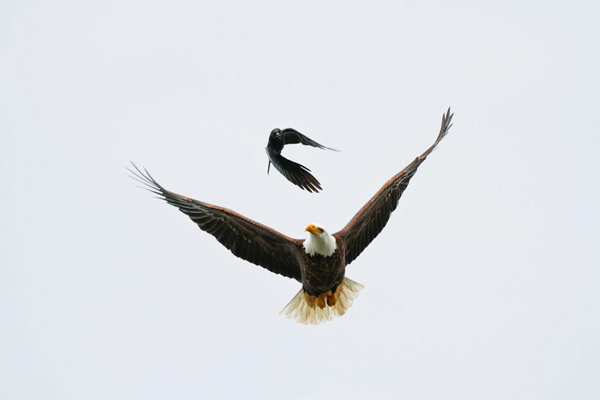
''Before people started going to Tofino and enjoy it as a tourist destination, they were going [there] to extract resources. These out-of-the-way places are seen first for the resources, that they can be extracted. I wanted to show people that there is a lot more going on than just getting trees down and catching all the fish. So inspiring people to get involved and think about the way they're living or respect what we have, and hopefully helping to protect it.''
You're still in Tofino, the place you grew up, married with a three-year-old daughter. Did you consciously want to stay there and start a family?
''[The more] we're out with our daughter, the more time I want to be on the West Coast, do more camping with her, more exploring with her. I don't think there's anywhere else we really want to live.''
See more of Jeremy Koreski's photography on his website or by following him on Instagram.
Koreski raised enough funds through Kickstarter for a photo book of surf, outdoor and nature photos from B.C.'s coast. The book, This is Nowhere, will be available on his website and at select retailers mid-August. This interview has been edited for clarity. ![]()
Read more: Travel, Environment



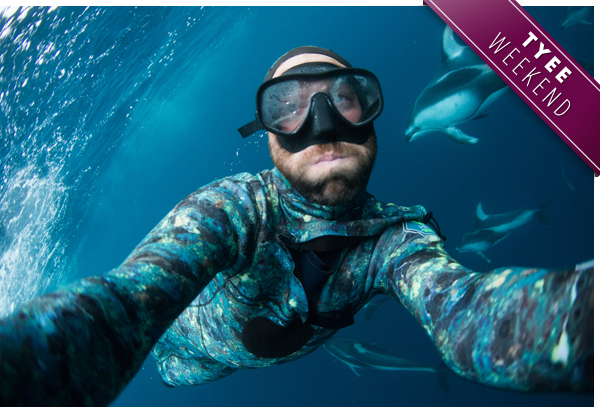












Tyee Commenting Guidelines
Comments that violate guidelines risk being deleted, and violations may result in a temporary or permanent user ban. Maintain the spirit of good conversation to stay in the discussion.
*Please note The Tyee is not a forum for spreading misinformation about COVID-19, denying its existence or minimizing its risk to public health.
Do:
Do not: